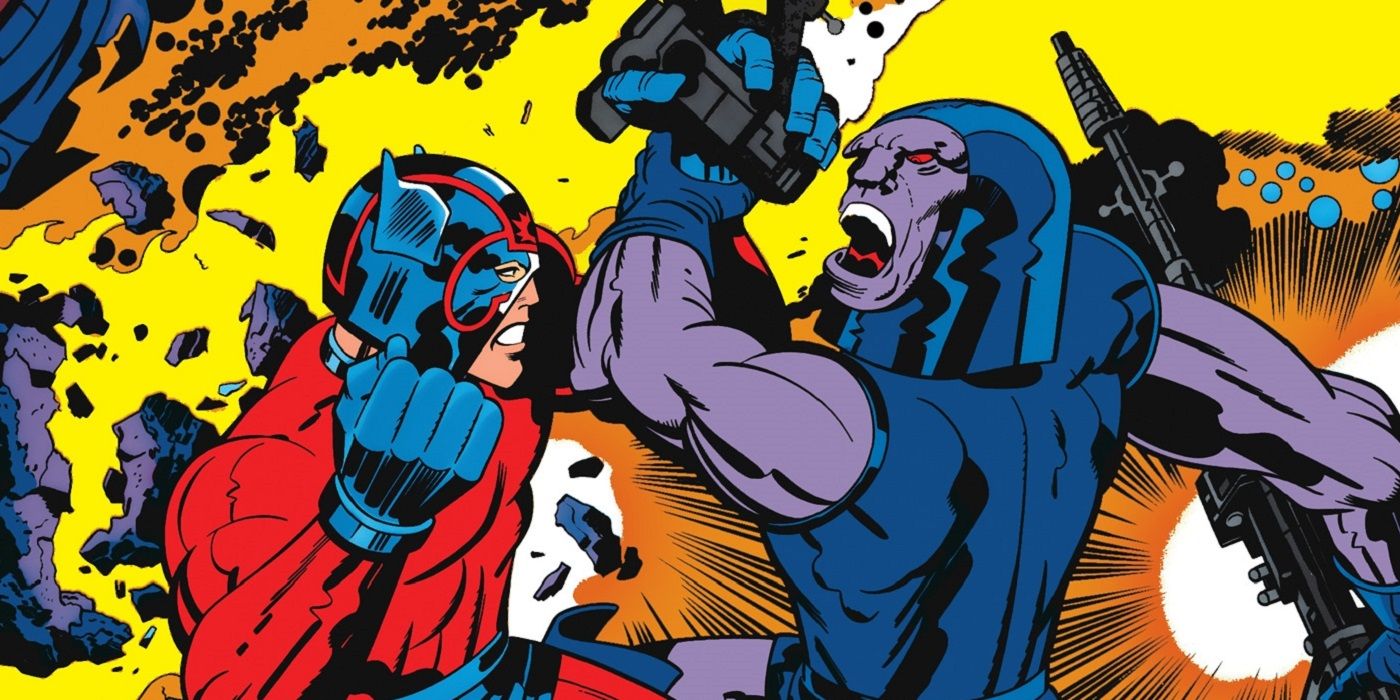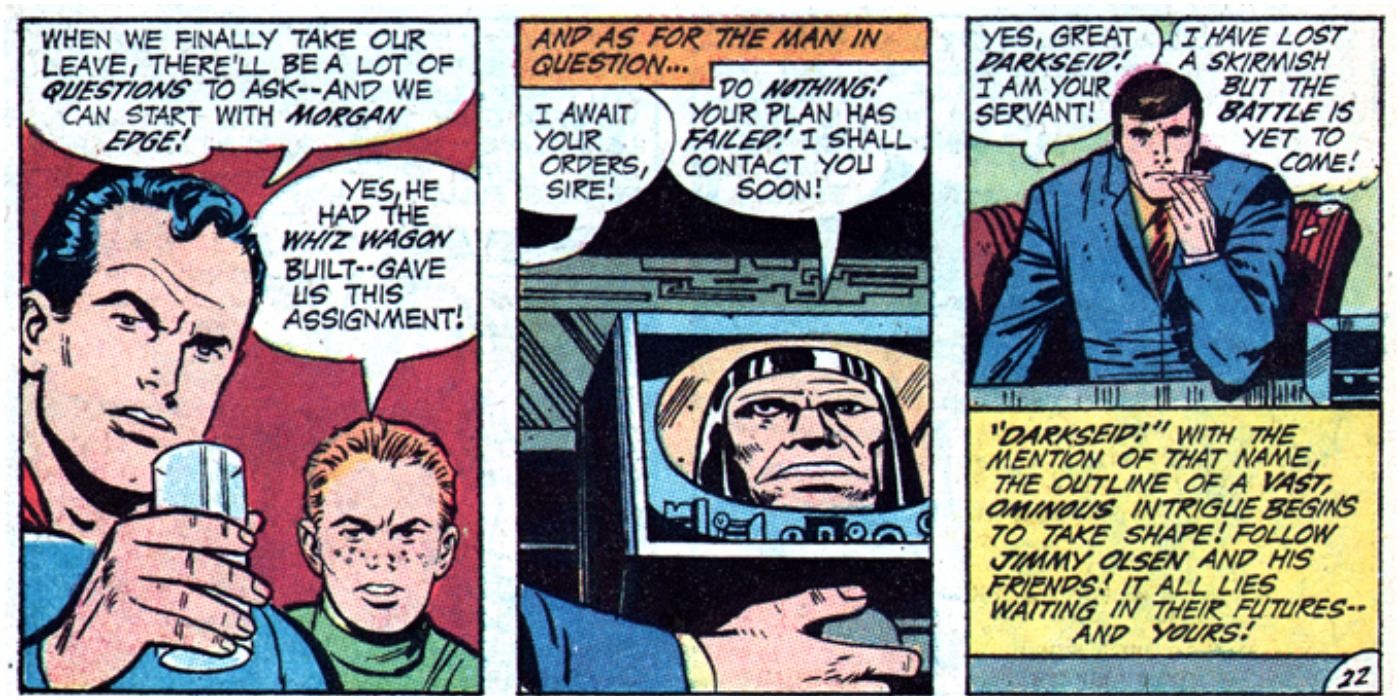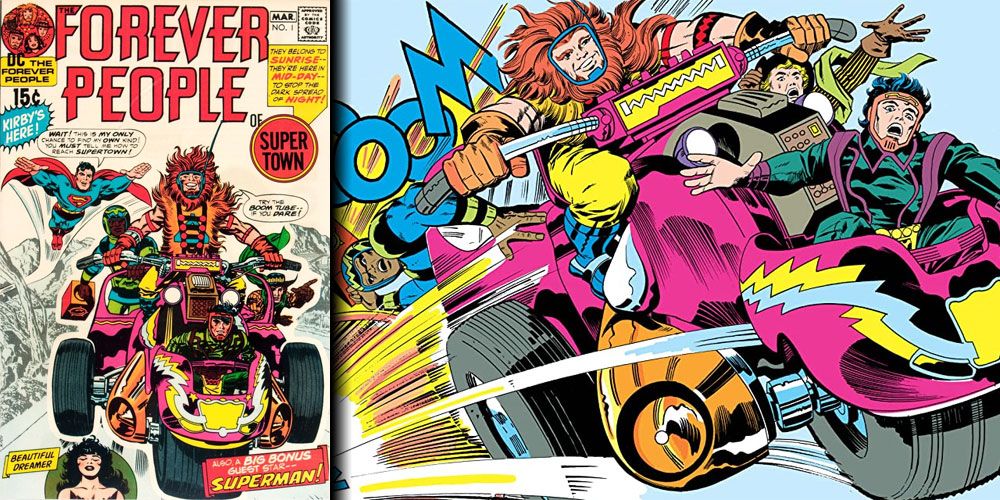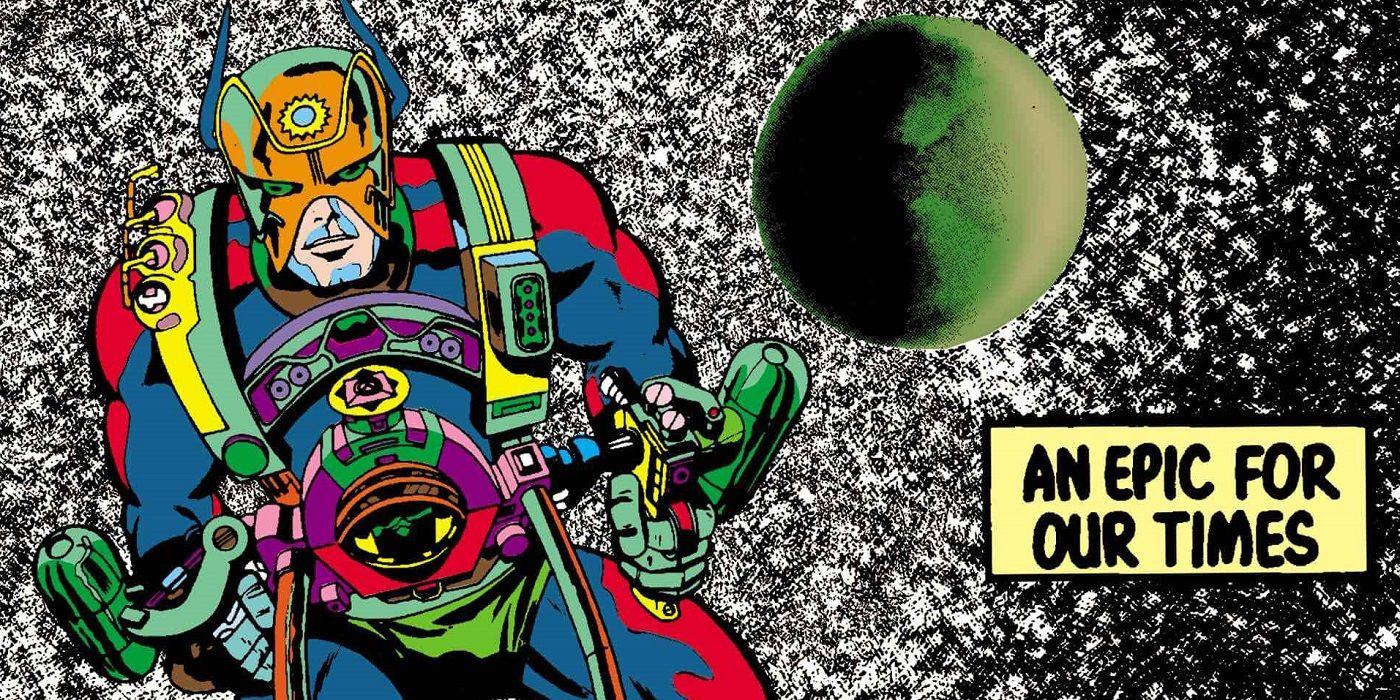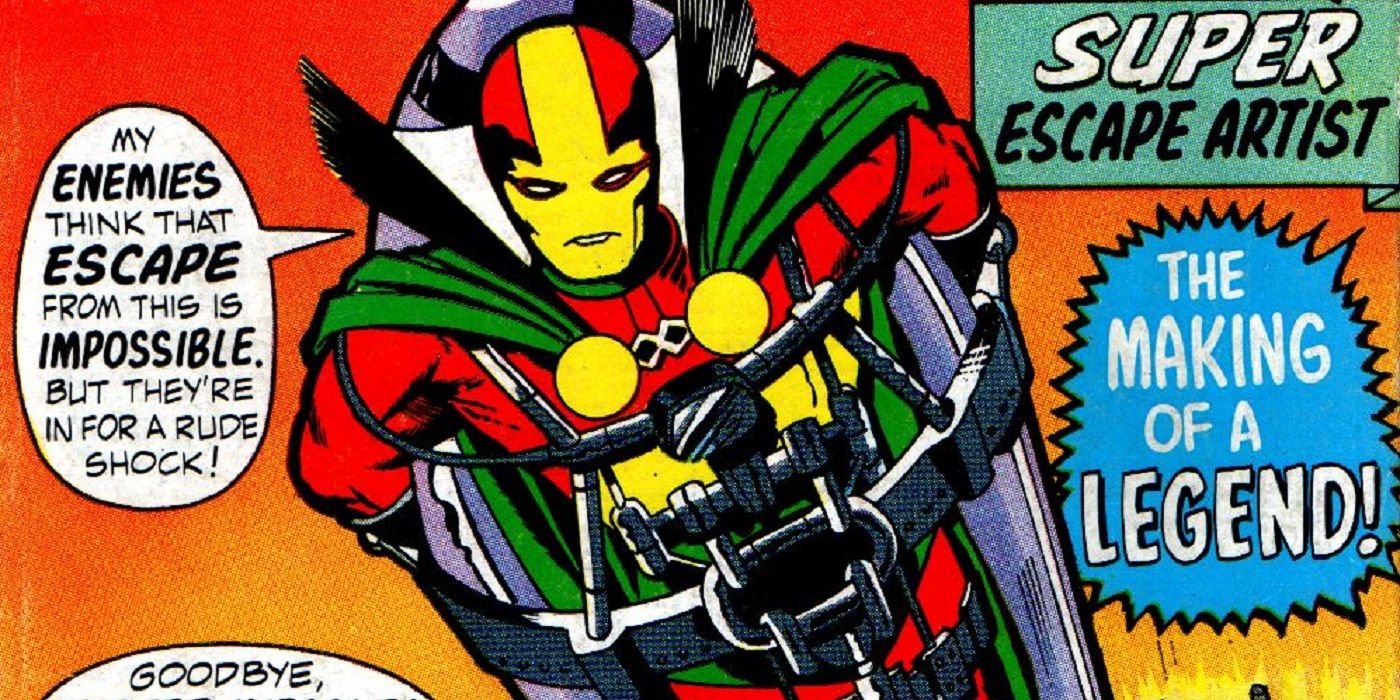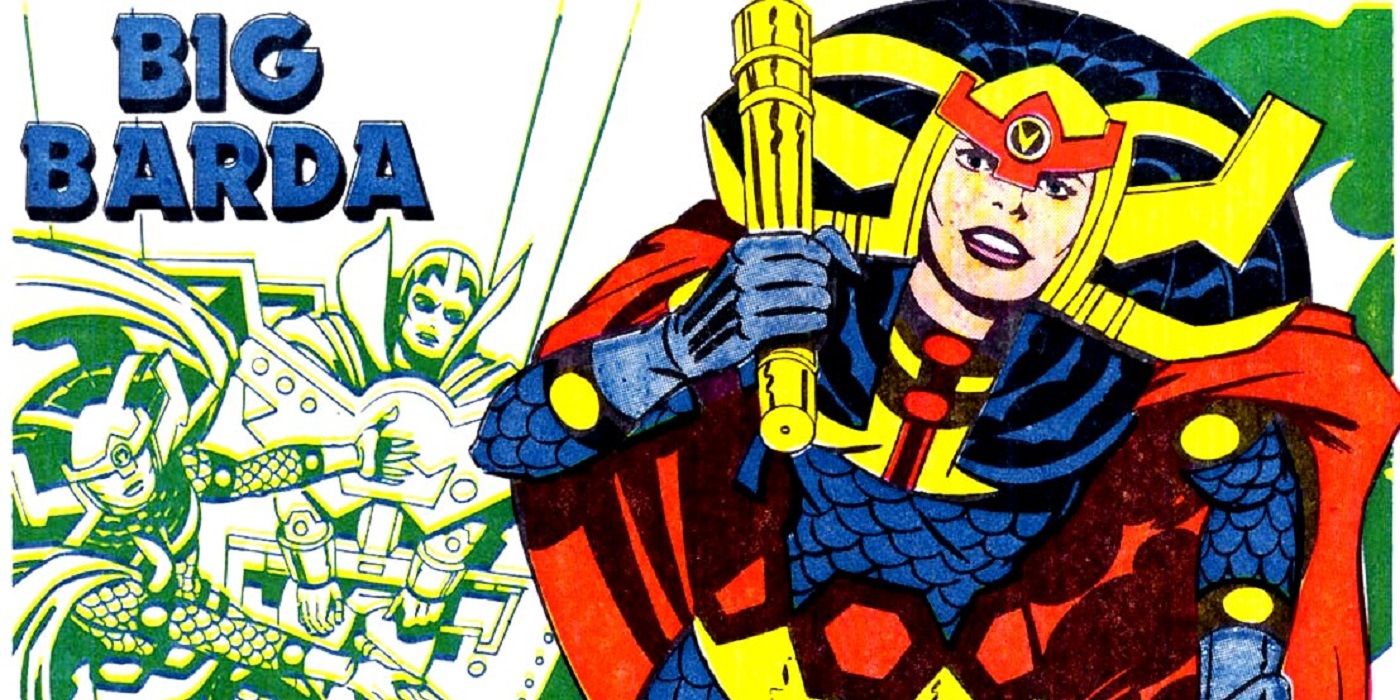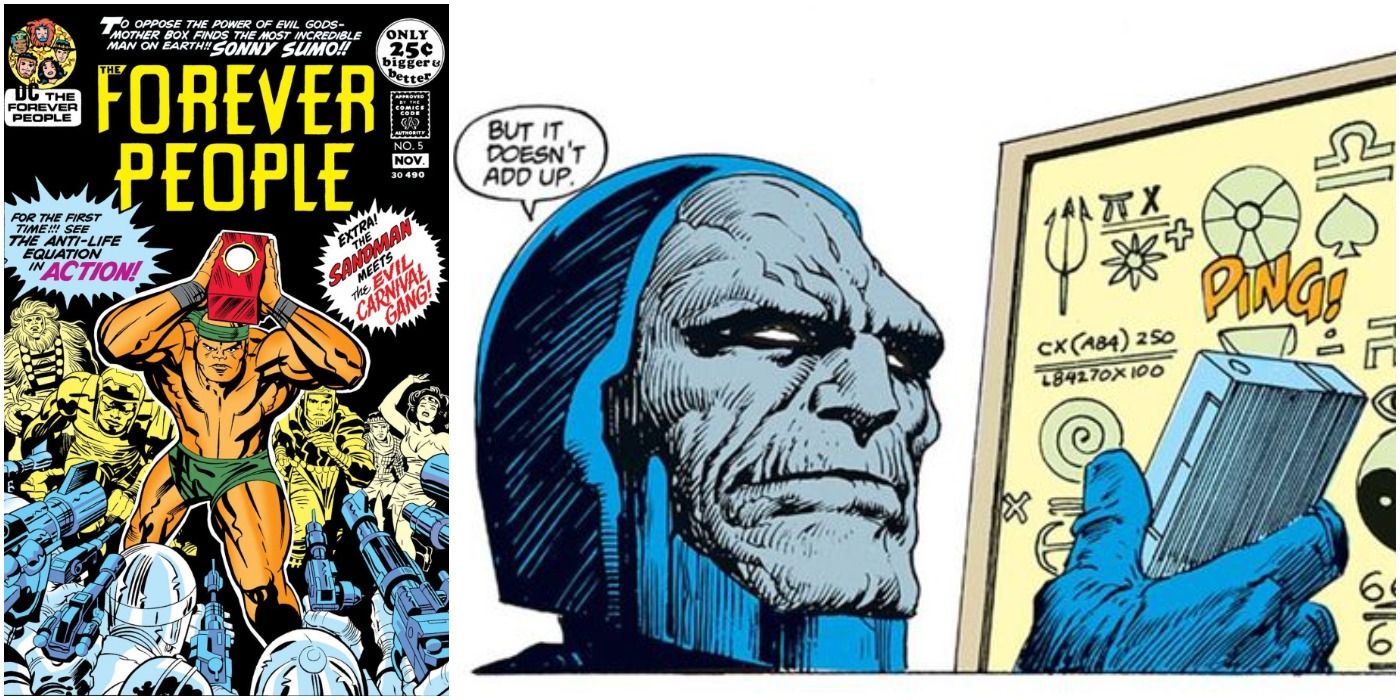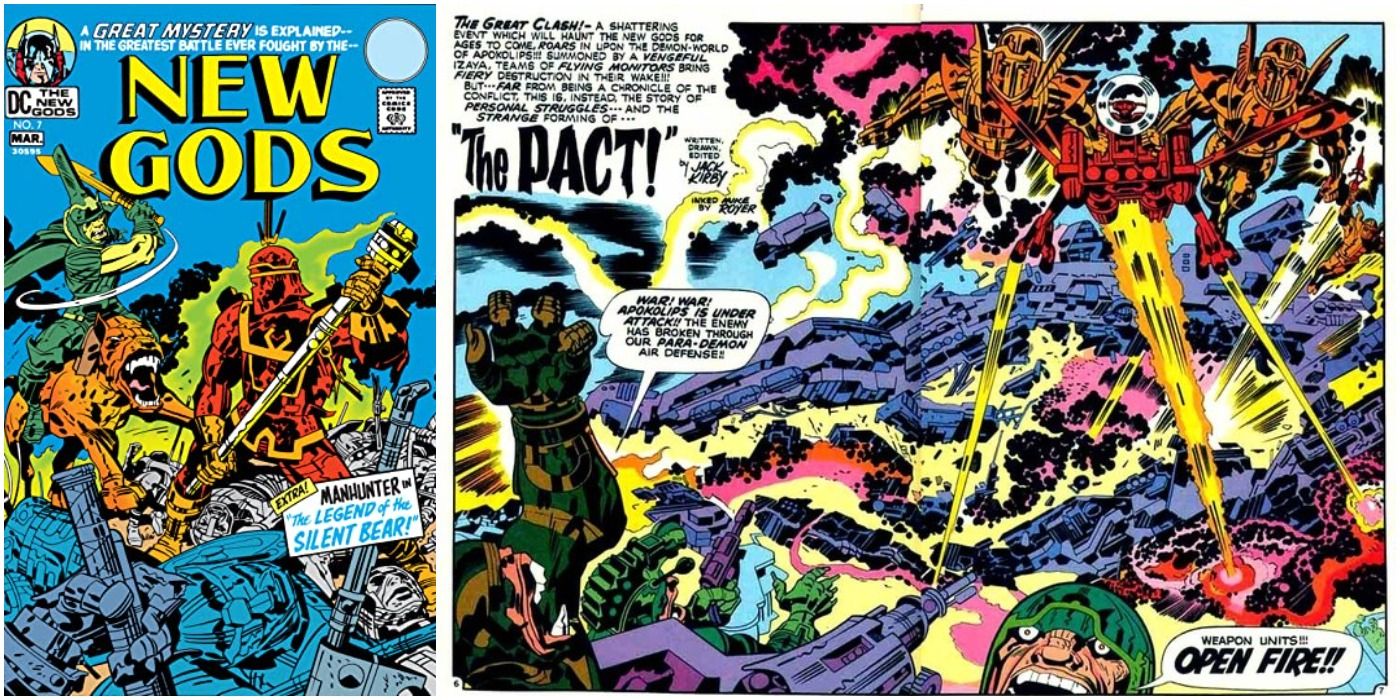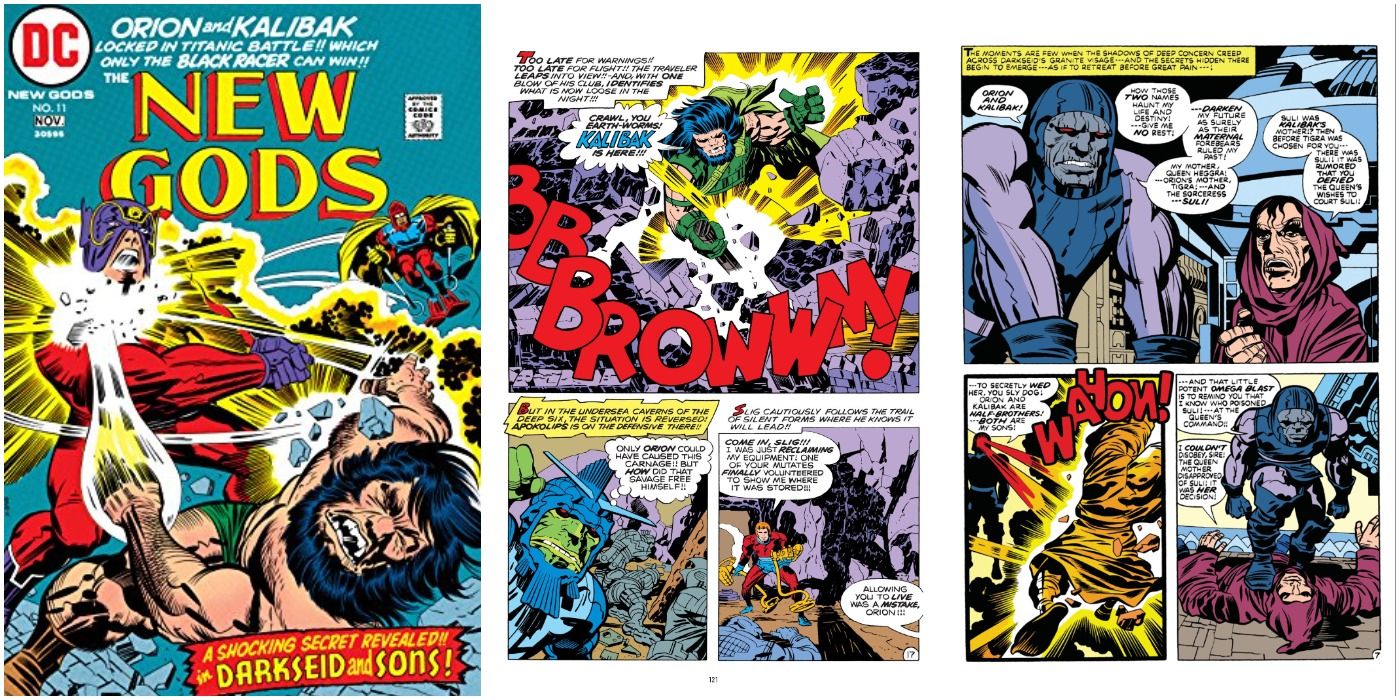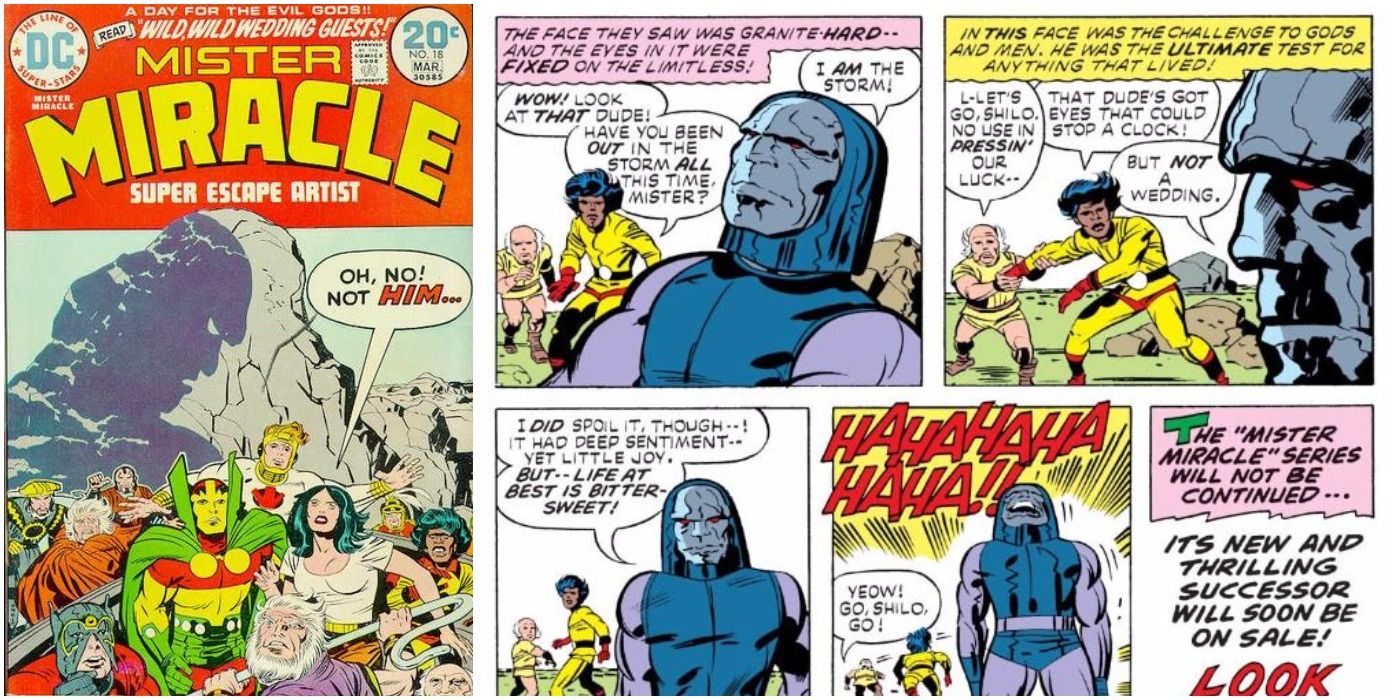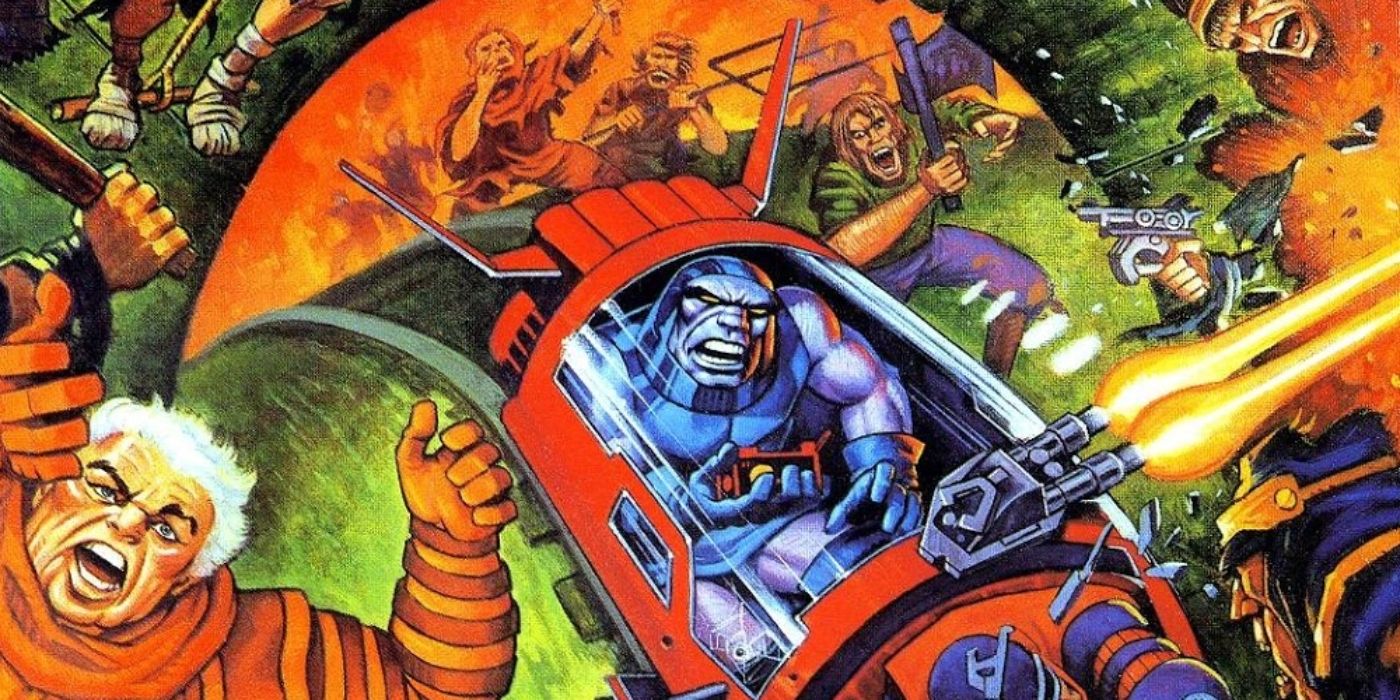So many of the "Big Two" comic companies' characters are traced back to Jack Kirby. He sparked the Marvel Universe twice over, first with his co-creation of Captain America alongside Joe Simon in 1941 then again in 1960 when he and Stan Lee debuted the Fantastic Four. Kirby co-created countless other Marvel characters, but in the 1970s he jumped ship to the "Distinguished Competition."
Though Kirby's time at DC was brief, a mere four years from 1971-1975, the impact of this work on the DC Universe still thrives. Most significant is his Fourth World Saga, an umbrella which includes New Gods, The Forever People, and Mister Miracle.
10 "Superman’s Pal Jimmy Olsen #134" Introduced Darkseid
Kirby's run on Superman's Pal Jimmy Olsen is mostly ancillary to his Fourth World Saga. However, the second issue of his run, #134, is the first appearance of Darkseid; The issue's final page reveals that the story's villain, Morgan Edge, was a pawn of Darkseid.
This tied the Lord Of Apokolips and the Fourth World to the Superman mythos from the beginning. The issue's closing narration also promises "vast, ominous intrigue" has begun to take shape— a shape that would quickly become apparent.
9 "The Forever People #1" Was The First True Glimpse Of The Fourth World
Kirby's proper kick-off to his magnum opus was The Forever People #1. While The Forever People ended up the least popular series of the Fourth World, it's influential to the Saga all the same. This debut issue follows up on Superman's Pal Jimmy Olsen #134, featuring appearances by Jimmy and the Man of Steel themselves, while also properly introducing Darkseid.
The Forever People are the first Gods of New Genesis to make their way to Earth - Superman nearly makes a trip through their Boom Tube, eager to see a world of beings like himself. In the end, though, he turns back after realizing he can't leave Earth undefended. This ending signals foreshadows that while The Fourth World may have begun in Superman's orbit, readers shouldn't be expecting constant crossovers.
8 "New Gods #1" Set The Saga In Motion
It came after The Forever People, but New Gods is a more important piece of the saga. While the series soon makes its way to Earth, this opening issue is the first to demonstrate the Cosmic Scope of the Fourth World.
For one, readers are introduced to both New Genesis and Apokolips, while the issue also debuts Orion, hero of New Genesis who Kirby saw as the saga's ultimate protagonist. Orion clashes for the first time, but not the last, with the spawn of Darkseid, Kalibak— this clash is the first hint of Orion's to-be-revealed lineage.
7 "Mister Miracle #1" Introduced The Third Leg Of The Fourth World
The last of Kirby's Fourth World comics ended up being the most popular— Mister Miracle would run for 18 issues and the titular hero is the most prolific of the New Genesis heroes. In this debut, Scott Free takes up residence on Earth while on the run from Apokolips. He soon meets aging escape artist Thaddeus Brown, aka "Mister Miracle," and his manager Oberon.
After Brown ends up dead at the hands of Intergang, Free, himself a natural escape artist, takes up the mantle of Mister Miracle. In the stories to follow, Scott uses the alias both professionally as an escape artist and heroically against the forces of Apokolips.
6 "Mister Miracle #4" Introduced Big Barda
One gets the sense that Kirby was attempting to build the Fourth World piece-by-piece; most of issues across all three series include a character debut as at least a B-Plot. One of the most important character introductions was Mister Miracle #4, the first appearance of Big Barda.
Another fugitive from Apokolips like Scott himself and leader of the "Female Furies," Barda becomes the third main character after Scott and Oberon. Even in later stories not written by Kirby, Mister Miracle and Big Barda are an inseparable pair, both romantically and as heroes. Their endurance as a couple is doubly heartwarming since Kirby based their relationship on the one he had with his wife, Roz.
5 "Forever People #5" Explained The Anti-Life Equation
If there's a MacGuffin in the Fourth World mythology, then it's Darkseid's quarry - the Anti-Life Equation. The Equation destroys free will through it's mathematical proof that life is meaningless; simply hearing the equation will compel sentient life form to abandon hope and submit to Darkseid, because Darkseid Is. Kirby was a veteran of WWII, and the Anti-Life Equation was no doubt inspired by the totalitarianism he witnessed during his service.
Anti-Life is properly introduced in Forever People #5; it's likewise revealed Darkseid's interest in Earth is because he suspects a human mind holds the key to solving the Equation. This issue reveals that he is correct.
4 "New Gods #7" Provided Backstory
New Gods #7, or "The Pact," is the lynchpin of the Fourth World Saga. Told entirely as a flashback, the story lays out the backstory of the Fourth World and follows up on hints scattered around previous issues. "The Pact" begins at a time before Darkseid ruled Apokolips and Highfather led New Genesis; the death of Avia, the young Highfather's wife, at the hands of Apokoliptian general/Darkseid's uncle Steppenwolf, kicks off a war between the two planets.
Eventually, Darkseid and Highfather reach a truce, transitioning the conflict to a Cold War. The pact is sealed by an exchange of sons; Darkseid's son Orion is given over to be raised on New Genesis, Highfather's son Scott Free is sent to be a captive of Apokolips.
3 "New Gods #11" Set Up A Confrontation That Never Came
With Orion's lineage fully revealed to audience and characters alike, New Gods #11 saw him face off against his half-brother Kalibak. With his brutish bent and animalistic rage, Kalibak embodies the parts of Orion which the hero fears the most, so the clash is just as much about Orion's internal conflict as a brother vs brother duel.
DeSaad transmits extra power to Kalibak, but the transmission is cut off when an enraged Darkseid kills his steward. Kalibak is then swept away by the Black Racer, death incarnate. Orion ends the issue aware his clash with Kalibak was a mere warm-up for a duel with his father, but the premature end to New Gods forestalled this.
2 "Mister Miracle #18" Seemingly Wraps Things Up
Mister Miracle last seven issues longer than either The Forever People or New Gods. When it's brief reprieve ended, Kirby used Mister Miracle #18 to provide some resolution to the Fourth World while leaving the door open for further stories later on.
The issue rather conclusively concludes the comic's native storylines; Scott & Barda are wed by Highfather and decide to move from Earth to New Genesis. Scott passes on the Mister Miracle mantle to Shiloh Norman, bringing the series and his arc full circle. At the same time, Darkseid eventually crashes the party - when Oberon and Shiloh question if he'd "been out in the storm," the villain ominously declares "I am the storm."
1 "Hunger Dogs" Is A Belated Conclusion
A decade after the original Fourth World comics ended, Kirby finally got to give his creations an ending, even if the final result was different from what he'd originally imagined. In 1984, DC reprinted New Gods in six, 48 page issues; two stories per issues. The sixth and final included both New Gods #11 and a new story, "Even Gods Must Die."
This latter story led into the original graphic novel, Hunger Dogs, that was Kirby's final say on the Fourth World. Forbidden to kill either Darkseid or Orion by DC's executives, Kirby still ended his saga on a bittersweet note; New Genesis is obliterated and it's inhabitants decide to wander the universe, while Darkseid is left alone, the dregs of Apokolips at his doorsteps.

